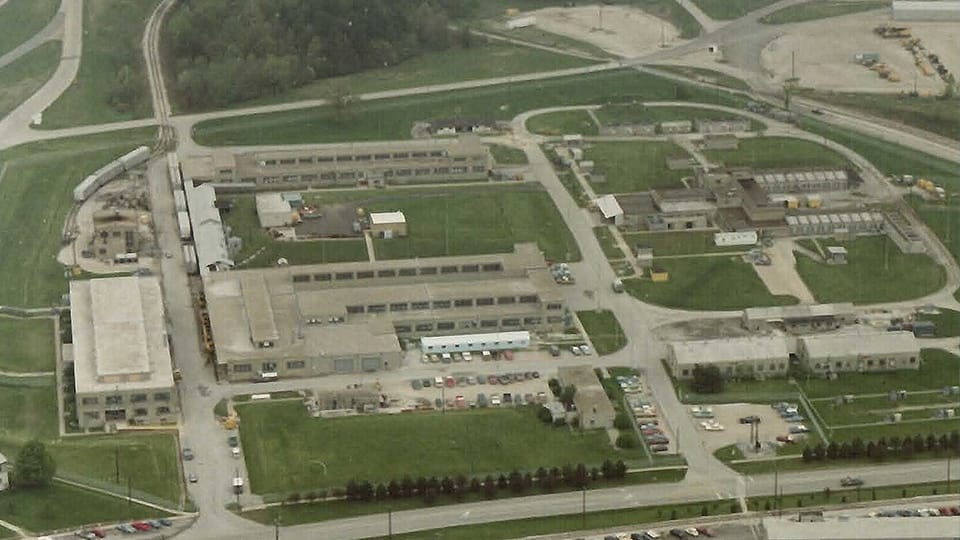Crane Army Ammunition Activity seeking more industry partners
Subscriber Benefit
As a subscriber you can listen to articles at work, in the car, or while you work out. Subscribe Now
CRANE, Ind. - As it moves forward with a 15-year, $285 million modernization plan, Crane Army Ammunition Activity is looking to bolster its roster of public-private partnerships.
The activity said the move is part of an aggressive business model to create synergies within current munitions production.
“By having a government facility like Crane Army Ammunition Activity partner with commercial industry, it allows us to utilize our skilled workforce, our facilities, our equipment…to be able to provide certain munition types very often faster, and it allows greater flexibility to the [Department of Defense],” said Business Development Manager Tom Peske.
Peske discussed the effort and the benefits of public-private partnerships in an interview with Inside INdiana Business.
Established in 1977 at Naval Support Activity Crane, Crane Army Ammunition Activity produces and provides conventional munitions in support of U.S. Army and Joint Force readiness.
Patricia Staggs, director for the facility’s Activity Support Directorate, said in written remarks that a public-private partnership can allow projects to be completed more quickly and lower the overall cost of entry for contractors to provide products and services to the DOD.
“Crane offers secure facilities, unique services, ammunition-peculiar equipment, access to government environmental permits, and quick-to-execute contract agreements for up to five years,” she said. “By partnering with CAAA, we can provide the infrastructure and skilled workforce that will allow contractors to enter the DOD market faster.”
Staggs said such partnerships can also help stabilize the procurement of raw materials and other business-related costs. Peske noted that having public-private partnerships in place can also provide stability for Crane Army’s workforce.
“It allows us to stabilize peaks and valleys, if you will, in workload demand, so that we can keep our workforce consistently engaged,” he said. “They have a unique skill set that isn’t something you can just immediately pull off the street. So we are able to keep them actively workloaded.”
While Crane Army has always had public-private partnerships, Peske said the move toward actively pursuing them is part of a shift in how the activity is looking to do business.
“Essentially, we saw how the current situation worldwide is the need for munitions, the need to be able to produce and get them out quicker,” he said. “We started looking at other ways that we can partner with industry or partner with other government agencies in order to be able to produce and provide it at a faster rate that honestly, worldwide events are pushing us to.”
Peske said while he can’t go into details just yet, the response to the push for more industry partnerships has been strong, and discussions with several defense companies are ongoing.
“The reaction has been very good. We’ve had a lot of visits to Crane itself, to southern Indiana to see what it is we do and what our facilities are like, what our workforce is like, and getting that word out just over this period of time has been really a shift of how people view Crane Army,” he said.
The shift toward more public-private partnerships is a key element to Crane Army’s modernization plan, which includes a $100 million investment to replace the pyrotechnics production processes facility at NSA Crane that was announced earlier this year.
“[NSA] Crane itself was established in 1941, and that’s the footprint we sit in. But that doesn’t mean we have to stay that way,” Peske said. So we are actively and aggressively looking at where we can make upgrades and improvements in order to better service the warfighter in the future. That modernization just goes hand-in-hand with us looking to do more partnerships and improve our business, because we’re not going to be able to attract new business to Crane if we are utilizing 1940s 50s, 60s, vintage-era equipment and buildings.”
Peske said that the ultimate goal of the modernization effort and the push for more public-private partnerships is to sustain what Crane Army already does well—namely the production, shipping, receiving and storage of munitions—with the ability to grow those efforts over time.
